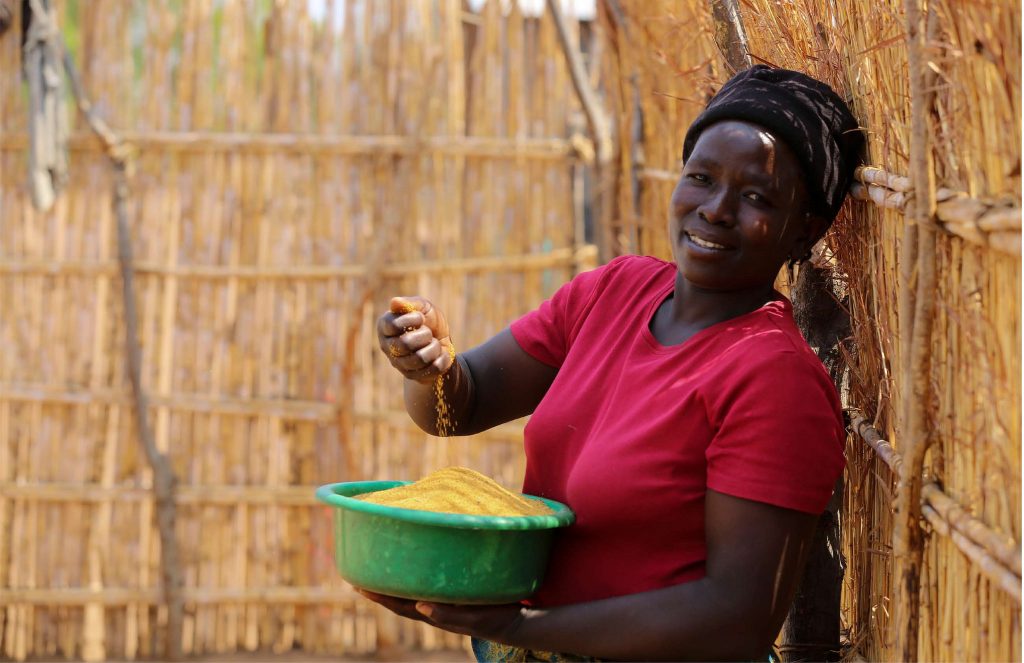Post Harvest

Photo by: Chipiliro Khonje
Food insecurity is one of Africa’s most pressing problems that is unlikely to go away soon. Hunger crises are getting more frequent. So far, external interventions, as well as national policies, have mostly focused on increasing food production – with mixed results.
Given that pre- and post-harvest losses amount to 30% to 50% for many staples, even reaching 80% in some cases, only relatively weak efforts have been undertaken to reduce them. Some of them were directed at improving storage on a village, regional or state level. As food treatment and storage in sub-Saharan African agrarian societies happens nearly exclusively on the compound level, these ill-conceived approaches were not very successful. Many of these interventions have left no traces at all.
The relatively few initiatives by international organisations to improve treatment and storage on the compound level were, mostly, equally failures. National rural extension services, where they exist, seem mostly to be neither aware of the problem nor equipped to improve the situation.
So, on the whole, the agrarian societies have often been left to their own devices. The societal organisation of these groups is ethnic with a wide variety, and their methods of post-harvest treatment and storage vary equally widely. Steeped in their traditions, many of these societies have developed, over time, rather ingenious methods to treat, store and transform their seeds and staple crops. These are not particularly effective, however, against the most damaging factors, which include fungus, insects, birds, rodents, fire and theft in different measures.
A particularly important problem is the treatment and storage of seeds, because while losses of staples affect the nutritional status of the families and their capacity to sell parts of their produce, the loss of seeds can put the next productive cycle in jeopardy. Therefore, many societies have developed specific mechanisms to guarantee the availability of seeds for all producers before the beginning of the planting season. These go well beyond the mechanisms of solidarity that are in place for the sharing and re-distribution of foodstuffs. Many societies have traditional “seed banks” that provide adequate seeds for staple products, according to the specific needs of producers that depend on many factors, such as climatic and soil conditions, etc.
We will also look into the dynamics of post-harvest treatment, storage, food transformation and food consumption and their impact on nutrition and food security at the individual, household, community and society levels.
It is obvious that some treatment and storage methods are much more adequate against some of the most damaging factors than others. The non-adoption of measures proposed by external interventions can be attributed mostly to inadequate approaches, and to a lack of understanding of the intricacies of the societal factors involved in compound treatment and storage by external agencies.
It is strange, however, that relatively good storage practices from some societies do not seem to diffuse and be adopted by others which have access to them and could easily introduce and adapt them to their own needs, as they operate under nearly identical conditions.
To understand these phenomena, thorough research that analyses the social structures, the specific traditions, the cultural matrices and the practices governing treatment and storage is required. It will also be necessary to study the internal dynamics and the specific floating equilibria within the productive and reproductive units on different aggregate levels (family, extended family, neighbourhood, village, lineage, etc.). As these dynamics are directly linked to the intricacies of agricultural and horticultural production systems, these will have to be taken into account.
Initial questions:
History and experiences
What are the practices used historically and actually? What are the underlying patterns?
Needs and problems
What are best practices? What are the losses, by product, by storage type, by transformation technology? On what level?
Cost and investments
What are the overall and specific costs? What kind of investment is required? Are the necessary inputs available?
Knowledge and awareness
Is there knowledge about losses, about other methods and technologies? About the potential of different approaches?
Supply and marketing
Are the products for protection available on the market? Are the products intended for self-consumption or sale? What are the quality requirements for marketable products? Are there trade barriers?
Public policies
Are there specific food security policies, programmes and projects? Do they include post-harvest treatment and transformation? How are they shaped? Are there specific interest groups influencing these policies and programmes? What kind of actors are involved?
Media and communication
Are the relevant topics aired in national and local media? In what ways? Are there any specific agencies that promote the relevant topics? What is the organisational landscape dealing with food security and post-harvest-related matters? What are the internal perceptions and communication processes about the relevant topics? Is there an awareness of the post-harvest process potential for food security?
